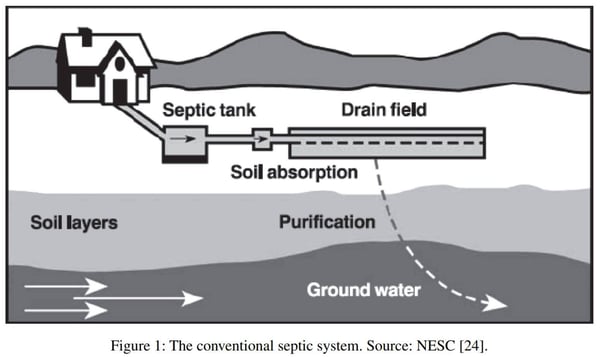Introduction:

Image: www.wikihow.com
Every homeowner’s tranquility depends on a well-maintained septic system. But when it comes to locating septic lines, the path to clarity can be as murky as the water flowing through them. Understanding how to identify these lines is not only crucial for regular maintenance but also for addressing emergencies and avoiding costly repairs. Delve into this comprehensive guide to arm yourself with the knowledge and techniques to unravel the secrets hidden underground.
Unveiling the Septic System’s Blueprint: An Overview
A septic system is an essential component of any home relying on an off-grid wastewater management solution. Composed of a septic tank and drain field, this system ensures wastewater is treated and disposed of hygienically. Locating septic lines is vital for accessing and maintaining these components, as well as troubleshooting any issues.
Tools of the Trade: Equipping Yourself for the Task
Before embarking on your septic line exploration, gather the necessary tools to ensure a smooth and efficient process:
- Septic Line Locator: This specialized tool emits a signal that can be detected by a receiver to trace the path of septic lines.
- Metal Detector: As septic tanks and lines often contain metal components, a metal detector can be helpful in pinpointing their location.
- Plumber’s Probe: This long, flexible rod can be used to probe the ground and locate buried lines.
- Shovel: For excavating and accessing the lines when necessary.
- Safety Equipment: Always wear gloves and safety glasses when handling septic lines.
Proven Techniques: Mapping the Hidden Network
1. Radiant Heat Detection:
On a cold night, the warmth emanating from active septic lines can create a slight temperature difference in the ground above. Using a thermal imaging camera or simply feeling the ground with your hand, you can identify areas with higher temperatures, indicating the presence of lines.
2. Septic Tank Inspection:
The septic tank, typically located underground in the yard, serves as the starting point. Inspect the tank for access points or clean-out ports. Water flowing out of these openings indicates the direction of the leach field.
3. Tracing with a Septic Line Locator:
This device is the most accurate method for locating septic lines. Connect the transmitter to the clean-out port or directly to the septic tank. Use the receiver to follow the signal along the path of the lines. Avoid using this tool during rainy weather, as moisture can interfere with signal detection.
4. Plotting the Course with a Plumber’s Probe:
Insert the probe into the ground near the septic tank. Slowly push it down, feeling for any resistance or changes in consistency. When the probe hits a pipe or line, adjust its angle and continue tracing the path.
5. Observing Surface Markers:
Sometimes, septic lines may be marked with green or orange stakes or flags above ground. These markers are placed during installation and can provide a rough estimate of the location. However, do not rely solely on surface markers, as they may not be accurate or may have moved over time.
Conclusion:
Identifying septic lines is crucial for maintaining a healthy and well-functioning wastewater system. By utilizing a combination of tools and techniques, you can effectively locate these hidden lines with confidence. Remember, if you encounter any challenges or suspect a problem, always consult a qualified plumber for professional assistance. By mastering the art of septic line detection, you empower yourself to safeguard your home’s plumbing and enjoy peace of mind.

Image: www.originclear.com
How To Find Septic Lines